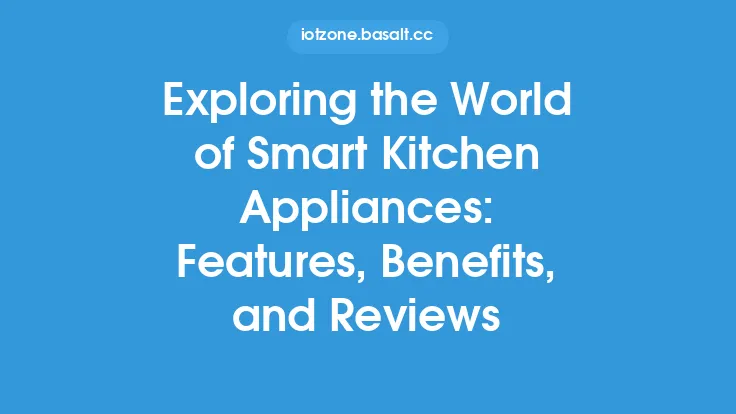Remote temperature monitoring and control have become essential components of smart home automation, particularly in the realm of smart thermostats and climate control. The ability to remotely monitor and control temperature settings has numerous benefits, ranging from enhanced convenience and energy efficiency to improved comfort and safety. In this article, we will delve into the advantages of remote temperature monitoring and control, exploring the technical aspects and evergreen information that make this technology a valuable addition to any smart home.
Introduction to Remote Temperature Monitoring and Control
Remote temperature monitoring and control systems utilize advanced technologies, such as Wi-Fi, Zigbee, or Z-Wave, to connect thermostats to the internet, allowing users to access and adjust temperature settings from anywhere, at any time. This is typically achieved through a mobile app or web portal, providing users with real-time temperature data, scheduling capabilities, and alerts. The technical backbone of these systems relies on sensors, microcontrollers, and communication protocols to facilitate seamless interaction between the thermostat, the user, and the cloud.
Energy Efficiency and Cost Savings
One of the primary benefits of remote temperature monitoring and control is the potential for significant energy efficiency and cost savings. By remotely adjusting temperature settings, users can optimize their heating and cooling systems to minimize energy consumption when the home is unoccupied or when outdoor temperatures are favorable. This can be achieved through geofencing, which uses GPS data to detect when the user is approaching or leaving the home, or through scheduling, which allows users to pre-program temperature settings based on their daily routines. According to the U.S. Department of Energy, a well-designed remote temperature monitoring and control system can save homeowners up to 10% on their annual energy bills.
Enhanced Comfort and Convenience
Remote temperature monitoring and control also offer enhanced comfort and convenience, allowing users to adjust temperature settings to their preferred levels from anywhere. This is particularly useful for individuals with busy schedules or those who travel frequently, as they can ensure their home is at a comfortable temperature upon arrival. Additionally, remote temperature monitoring and control systems can be integrated with other smart home devices, such as lights and security systems, to create a seamless and automated living experience.
Technical Aspects of Remote Temperature Monitoring and Control
From a technical perspective, remote temperature monitoring and control systems rely on advanced sensors and algorithms to accurately monitor and adjust temperature settings. These systems typically employ thermistors or thermocouples to measure temperature, and may also incorporate humidity sensors to monitor moisture levels. The data collected by these sensors is then transmitted to the cloud, where it is processed and analyzed to optimize temperature settings. The communication protocols used in these systems, such as Wi-Fi or Zigbee, play a critical role in ensuring reliable and secure data transmission.
Safety and Security Benefits
Remote temperature monitoring and control systems also offer several safety and security benefits, particularly in situations where extreme temperatures can pose a risk to people or property. For example, in areas prone to freezing temperatures, remote temperature monitoring and control can help prevent pipes from bursting by maintaining a minimum temperature threshold. Similarly, in areas with high temperatures, remote temperature monitoring and control can help prevent heat-related illnesses by maintaining a safe and comfortable indoor temperature. Additionally, remote temperature monitoring and control systems can be integrated with security systems to provide alerts and notifications in case of unusual temperature fluctuations or other safety concerns.
Best Practices for Implementing Remote Temperature Monitoring and Control
To maximize the benefits of remote temperature monitoring and control, it is essential to follow best practices for implementation. This includes selecting a system that is compatible with your existing thermostat and HVAC system, ensuring reliable internet connectivity, and configuring the system to optimize energy efficiency and comfort. Additionally, users should regularly update their system's software and firmware to ensure they have the latest features and security patches. By following these best practices, users can enjoy the full range of benefits offered by remote temperature monitoring and control, from enhanced convenience and energy efficiency to improved comfort and safety.
Conclusion
In conclusion, remote temperature monitoring and control offer a wide range of benefits, from energy efficiency and cost savings to enhanced comfort and convenience. By understanding the technical aspects of these systems and following best practices for implementation, users can maximize their benefits and enjoy a more comfortable, convenient, and secure living experience. As smart home automation continues to evolve, remote temperature monitoring and control will play an increasingly important role in creating a seamless and automated living experience, and their benefits will only continue to grow in importance.





